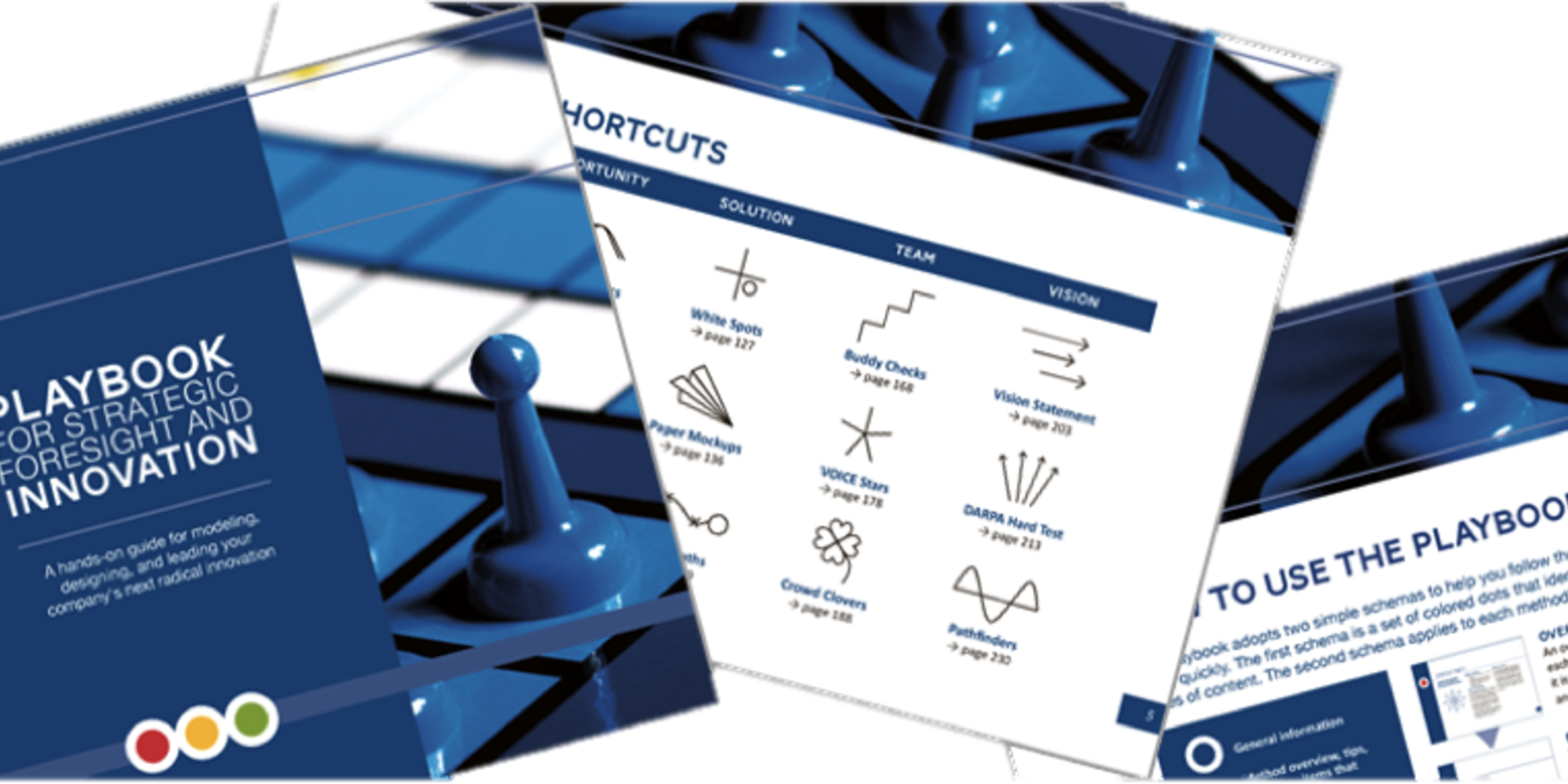Methods
By using this framework, participants prepare successfully for the future by answering three fundamental questions:
- How do I begin looking for future opportunities?
- How can I create a path to these opportunities that anticipates the inevitable changes along the way?
- What can I start doing today that will help me get there first?
Phase I: Perspective
Methods in the Perspective phase give you a broad frame of reference, holding up a mirror to the past so you may better anticipate the future.
| METHOD | GOAL | OUTCOME |
|---|---|---|
|
Context Maps |
Retain complexity of topic, while beginning to converge on priority areas | A visual map of the top 8 dimensions in a problem |
|
Progression Curves |
Connect multiple related events and highlights precedents | A set of related timelines showing past developments and their timing |
|
Janus Cones |
Uncover indirect influences and events within an era | A large-scale pattern map of past major decisions affecting current planning |
Phase II: Opportunity
By understanding future customer changes, methods in the Opportunity phase help you develop an ability to see growth opportunities that exist today and extend into the future.
| METHOD | GOAL | OUTCOME |
|---|---|---|
|
Generational Arcs |
Identify relevant population group and shared values | A diagram of the target user population(s) with size and attributes |
|
Future User |
Describe future user needs without extrapolating biases from today’s users | A comparison of two customer/user profiles, including anticipated needs |
|
Futuretelling
|
Convey nonverbal and contextual details about a future use case | A short performance of user needs, either captured as a live skit or via video |
Phase III: Solution
Methods in the Solution phase seek to define the questions that exist along different paths to innovation, which are specific to your industry, customers, organization, and team skills.
| METHOD | GOAL | OUTCOME |
|---|---|---|
|
White Spots |
Determine future focus of opportunity through iterative filters | A visual map of the competitive landscape and emerging market areas |
|
Paper Mockups |
Produce system models that show interactions and related components | A 3D prototype of a potential innovation solution |
|
Change Paths
|
Prioritize top decisions based on direct path to desired future | A visual high-level roadmap for future action |
Phase IV: Team
Methods in the Team phase focus on finding the talent and leadership your team needs to take an idea forward as a new opportunity or innovation.
| METHOD | GOAL | OUTCOME |
|---|---|---|
|
Buddy Checks |
Let you quickly filter promising innovation partners and teammates | Team rehearsal for communicating and receiving new ideas for target reactions |
|
VOICE Stars |
Identify your team’s aptitude for radical innovation | A team score on five dimensions of innovation culture with a related set of supporting activities |
|
Crowd Clovers
|
Map your personal or team's innovation network | A stakeholder map of the innovation players to bring an idea to life |
Phase V: Vision
Methods in the Vision phase sharpen your team’s vision so that it may take on a life of its own and guide everyone’s actions forward.
| METHOD | GOAL | OUTCOME |
|---|---|---|
|
Vision Statement |
Provide a simple formula to tell a future vision | A short inspirational description about an idea’s future value |
|
DARPA Hard Test |
Evaluate future vision in terms of its breakthrough potential | A quick scoring about an idea’s visionary potential |
|
Pathfinders |
Chart the most efficient success path for an innovation idea through an organization | A visual planning map revealing what to do (or not do) for optimal internal alignment and success |
General Non-Commercial Use
- Under the creative commons license (CC BY-NC-SA 3.0), the Playbook for Strategic Foresight and Innovation is available for free download to individuals, companies, and organizations for non-commercial purposes only.
- Parties interested in applying the foresight methods from the Foresight Framework for internal development, university teaching or educational reasons, or other purposes may do so with attribution and with no intention to profit.
- Other third party trademarks referenced on the website and in the Playbook for Strategic Foresight and Innovation are the property of their respective owners.
Commercial Use
- Commercial usage of the Foresight Framework and all related methods are restricted and full copyright are retained by the book's authors. You may not use trademarks, methods, or other intellectual property assets in connection with web sites, products, packaging, manuals, promotional/advertising materials, or for any other purpose except pursuant to an express written licensing agreement from the publisher. Contact the Innovation Leadership Group LLC's licensing team licensing@innovation.io for more information.
